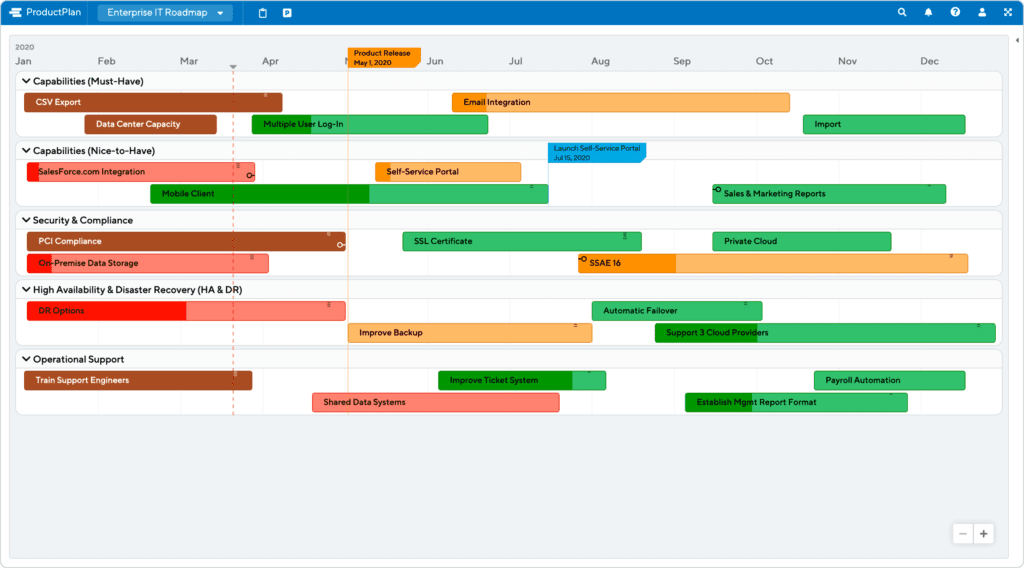Implementing a successful enterprise architecture (EA) transformation requires stakeholder buy-in. Hearing that may make you frustrated and worried about the time-cost invested. But it’s a prerequisite to bringing it to fruition. Even if you have the approval of the CEO to move your enterprise architecture update forward, you need to convince other stakeholders that it’s a good idea and worthwhile investment.
“The value of EA has to be understood and demonstrated for organizations to justify investment in building EA capability (Bernus et al., 2016). They also need to manage their expectations of EA programs with regard to the timeframe for seeing a return on investment (ROI).” – The value of and myths about enterprise architecture
Why You Need Stakeholder Buy-In
Significant changes require time and resources. Executives, on the other hand, are rarely patient. They would often prefer to devote resources to projects that align with their personal interests.
In the long run, transforming the enterprise architecture will pay dividends in terms of performance, cost savings, stability, and scalability. However, for the foreseeable future, it’s going to be a significant cost center generating zero revenue.
Without ironclad, stakeholder buy-in, there will always be naysayers lobbying to divert those funds and resources to more favored projects that will bring in new customers or more cash. Even projects with reliable support coming out of the gate can see their resources and funding get diverted midway through. The pause or diversion creates a half-pregnant status and squanders the project’s momentum.
If a project ends up getting put on ice or “temporarily” scaled back, the resources and expertise devoted to it will find themselves assigned to new projects. Expert consultants will move onto other gigs. Vendor offerings may be discontinued or evolve, adding extra work and cost to complete the project.
5 Tips to Earn Stakeholder Buy-in
We’ve made it crystal clear that you need to get stakeholders on board (and keep them there for the duration). So now, let’s talk about how to earn stakeholder buy-in.
1. Measurable goals
Executive love metrics. It’s not because they go to sleep each night with KPIs dancing in their heads. It’s because metrics let them quickly assess value and progress.
Unlike most individual contributors and middle managers, executives are dealing with every aspect of the company. They divide their attention across so many areas that they can only give each item a fraction of their time and can seldom delve into the details.
Metrics provide a shortcut to understanding what the project is trying to accomplish and how it’s progressing. However, metrics are only as good as the goals they’re working toward.
The first step is ensuring the project’s goals align with the company’s overall goals. There should be a natural and obvious synergy there. If you have to squint and arm wave, then it’s going to be hard to make that case.
Once you set the goals, it’s time to define the metrics. These can be a combination of quantitative and qualitative measures. They should also be easily digestible for the least technical members of the executive team.
2. Honesty is the best policy
You’re in IT, so you’re building roads and bridges, upgrading the electrical systems, and replacing some faulty sewer lines. All important, all delivering significant benefits, but it’s not going to get the headlines of a new product line. It won’t have the wow factor of an innovative marketing campaign, for example.
With that in mind, your pitch for stakeholder buy-in should reflect this reality. There will be benefits, but they will primarily be subtle and incremental.
There may be momentary bouts of excitement from the masses when they can do things faster, things work better, or automation has replaced an irritating manual process. But these significant achievements will soon become a daily routine. We don’t jump for joy every time we fire up Netflix or heat soup in a microwave, even though those things were jaw-droppingly amazing the first couple of times we did it.
So temper expectations and be straight about the upside of your project. Moreover, just as importantly, shine a light on the potential downsides. There may be ongoing costs, maintenance issues, resource requirements, and the like that come with the territory. Some processes may need to change, and training may be required, old systems may no longer be supported—lay this all out.
Your honesty will keep executives from feeling like you were hiding some “gotchas” during the approval process. It will also ground the whole project in reality.
3. Get input from everybody
Each stakeholder represents a unique point of view, with their perspective, experience, and wisdom. It may be tedious to hear everyone add their two cents, but there’s potential for a great value to be mined from this process as well.
You don’t know everything—and neither do your stakeholders—but leaving that knowledge base untapped is shortsighted. I guarantee you will learn things that will make the project more successful. You also don’t want to ignore the individual stakeholder concerns that later on might delay or derail your plan.
Make it a point to meet one-on-one with each stakeholder. Present them with the necessary details of your project. Ask them their opinion and let them pepper you with questions. You may not have all the answers, but it’s better to be stumped in an informal chat than blindsided in a meeting with the entire executive team.
Once you’ve caucused with everyone, you’ll have a 360-degree view of how the project is perceived. Plus you’ll know who might cause trouble and have a head start on tamping that down with facts and figures.
4. Institute ongoing, two-way communication
For big projects, a monthly or quarterly review and status meeting may not provide enough dialogue and information for executives. Fill in the gaps and head off crises and complaints by opening communication channels with stakeholders on your preferred communication tool.
Invite them to check in, provide feedback, or ask you questions whenever they’d like. Then proactively provide them with brief updates on how things are progressing. Even a quick email now and then keeps them informed and reminds them what you’re working on.
If you hit a roadblock, slow-down, or impasse, don’t wait until a regularly scheduled forum to elevate it. Executives may have valuable advice to offer or be willing to intervene and overcome those obstacles to keep things humming.
5. Create a plan for adoption
One of the biggest challenges for a successful IT architecture transformation is adoption. You want it to be smooth and painless while also being universal and speedy.
But change is always tricky, so having a planned, phased approach is still a best practice. Ensure your rollout has as few bumps as possible by including employee adoption into your enterprise architecture roadmap.
Rollout Communication includes:
- Initial messaging: “Hey, this is being built, and here’s why it will be great for you.”
- Advance training: “This is coming soon, here’s how it works and what it will mean for you.”
- Scheduled, incremental introductions: “Department A will transition in December, Department B in February, Department C in April, etc.”
- Picking up the stragglers: “We see you’re still using the old system, how can we help you with your transition?”
- Ongoing training: “Now that you’re using the new system, what problems are you having? What questions do you have? And did you know you can now do X, Y, and Z?”
- End-of-life: “We are officially pulling the plug on the old system on June 1st. Speak now or forever hold your peace.”
You are acknowledging the need for all these steps, and scheduling adequate, realistic timeframes for them to occur means a much higher likelihood of a successful transition and universal adoption. If you expect everyone to switch proactively or if you believe one training session is enough, then that all but guarantees a rocky road ahead.
You Can’t Roll Out a New Enterprise Architecture Alone
Although it might seem more straightforward (and would require fewer meetings), a successful enterprise architecture transition is nearly impossible to pull off without a broad base of stakeholder buy-in. Building that into your timeline and strategy from the beginning improves your odds of success.
Being inclusive and communicative when pursuing stakeholder buy-in instills their sense of ownership and investment in the project’s outcome. Their investment gives it a much better chance of getting done and achieving the goals it’s attempting to reach.
There’s no better starting point than building out an enterprise architecture roadmap for the entire initiative. Our templates make sure you won’t miss an essential step and give your project the professional polish it deserves.




